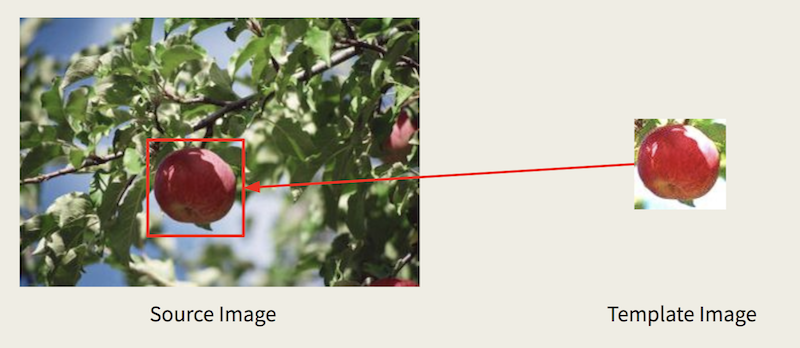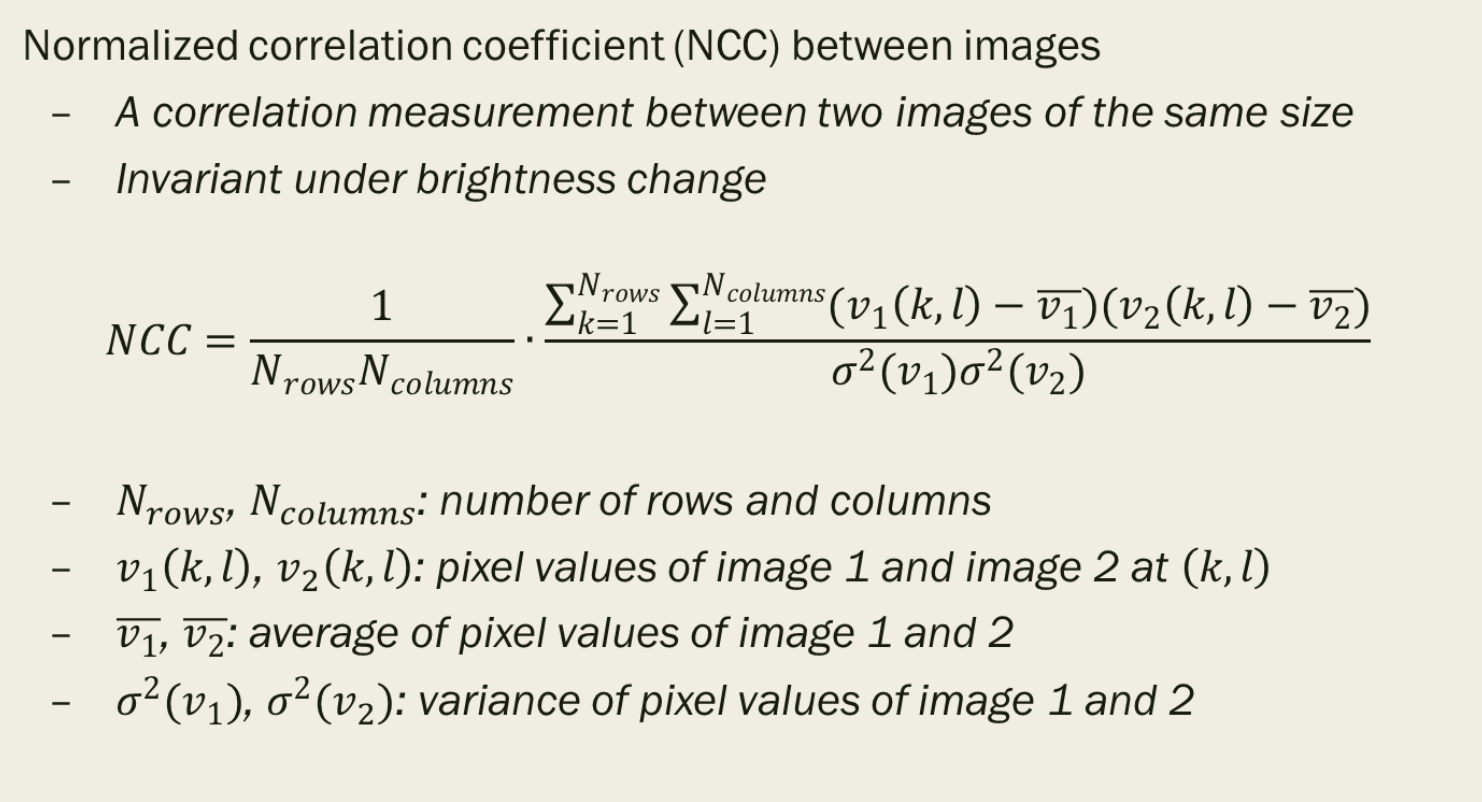目的是检测、定位一个物体在一副图像中的位置,主要是通过计算两幅图(待检测图像和图像)的相关性来定位的


用于计算相关性的公式如下:

算法:
- 在原始图像上移动模板图像
- 计算每个位置的NCC
- 当NCC最大时:最佳!
python实现:
import numpy as np import cv2 def TemplateMatching(src, temp, stepsize): # src: source image, temp: template image, stepsize: the step size for sliding the template mean_t = 0; var_t = 0; location = [0, 0]; # Calculate the mean and variance of template pixel values # ------------------ Put your code below ------------------ mean_t,var_t=cv2.meanStdDev(temp) max_corr = 0; # Slide window in source image and find the maximum correlation for i in np.arange(0, src.shape[0] - temp.shape[0], stepsize): for j in np.arange(0, src.shape[1] - temp.shape[1], stepsize): mean_s = 0; var_s = 0; corr = 0; # Calculate the mean and variance of source image pixel values inside window # ------------------ Put your code below ------------------ mean_window=np.mean(src[i:i+temp.shape[0],j:j+temp.shape[1]]) var_window=np.var(src[i:i+temp.shape[0],j:j+temp.shape[1]]) # Calculate normalized correlation coefficient (NCC) between source and template # ------------------ Put your code below ------------------ mul=(src[i:i+temp.shape[0],j:j+temp.shape[1]]-mean_t)*(temp-mean_t) sum_val=sum(sum(mul[i])for i in range(len(mul))) corr=(1/float((temp.shape[0])*(temp.shape[1])))*sum_val/((var_t)*(var_window)) if corr > max_corr: max_corr = corr; location = [i, j]; return location # load source and template images source_img = cv2.imread('/Users/wangmengxi/Documents/mercy/ec601/openCV/source.jpg',0) # read image in grayscale temp = cv2.imread('/Users/wangmengxi/Documents/mercy/ec601/openCV/template.jpg',0) # read image in grayscale location = TemplateMatching(source_img, temp, 20); print(location) match_img = cv2.cvtColor(source_img, cv2.COLOR_GRAY2RGB) # Draw a red rectangle on match_img to show the template matching result # ------------------ Put your code below ------------------ cv2.rectangle(match_img,(location[1]-temp.shape[1]/2,location[0]-temp.shape[0]/2),(location[1]+temp.shape[1]/2,location[0]+temp.shape[0]/2),(0,0,255),3) # Save the template matching result image (match_img) # ------------------ Put your code below ------------------ cv2.imwrite("/Users/wangmengxi/Documents/mercy/ec601/openCV/match_img.jpg",match_img) # Display the template image and the matching result #cv2.namedWindow('TemplateImage', cv2.WINDOW_NORMAL) #cv2.namedWindow('MyTemplateMatching', cv2.WINDOW_NORMAL) #cv2.imshow('TemplateImage', temp) #cv2.imshow('MyTemplateMatching', match_img) #cv2.waitKey(0) #cv2.destroyAllWindows()
结果:
source img:

template:

match:
